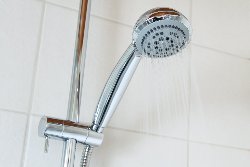Technology allows 9% of fertiliser to be redeployed
Technology allows 9% of fertiliser application to be redeployed
More precise aerial fertiliser spreading has already proven it can deliver environmental gains compared to blanket topdressing, but now fresh research is emerging that it will improve the bottom line of New Zealand’s hill country farmers.
Presenting their findings at the 30th Annual Fertiliser Lime and Research Workshop today, Michael White, Ravensdown Development Manager, and Dr Ants Roberts, Chief Scientific Officer, outlined results from 40 commercial fertiliser applications that have used the variable rate technology.
“Across the 40 farms an average of 9% of the land has either been environmentally sensitive or non-productive, which is well above what we expected. To be able to avoid those areas delivers significant environmental gains and potential savings for farmers, with the ability to reinvest those savings,” says Michael White.
“When it comes to fertiliser precision, pilots and aerial spreading operators over the decades have done the best they can with the technology they had. Only now are technology developments starting to emerge where hill country farmers can effectively start to pick and choose where to apply or not apply their fertiliser. If of sufficient size, a stream, some scrub or a sacred site can be mapped and avoided more easily, cost effectively and safely,” adds Michael.
Using AgResearch’s PKS lime econometric model, they then compared a variable rate application to a blanket fertiliser strategy on four farm modelled scenarios. Farm Economist, Phil Journeaux, reviewed and supplied the Overseer nutrient budgets and productivity weightings.
“What we have found over the four econometric scenarios we analysed is that within 10 years all farms were more profitable using the variable rate fertiliser strategy,” says Michael, “On average, the farm scenarios were $43 per hectare better off in that timeframe than they would have been using a blanket spreading strategy for a typical North and South Island farm. It also proved more sustainable, when tested against volatile returns for farm profitability over the ten years.”
The variable rate spreading technology is an ancillary programme funded by Ravensdown in support of its joint PGP (Primary Growth Partnership) programme with the Ministry for Primary Industries, called Pioneering to Precision, which is aiming to develop aerial soil testing technology using hyperspectral imagery.
Now in year four of its seven-year programme, Ravensdown is identifying considerable productivity potential between differing land management units on hill country farms.
“It’s important that our research is going to be economically viable for it to be adopted by farmers. What this research proves, is that farmers can have confidence in the technology right now, in its early stages, knowing all the while that further technological advancements in GPS guidance and automation will allow greater efficiencies and effectiveness down the line.”
ends


 National Road Carriers: Praises NZTA State Highway Investment Proposal Turnaround
National Road Carriers: Praises NZTA State Highway Investment Proposal Turnaround Greenpeace: Cameras Reveal Mass Underreporting Of Dolphin, Albatross And Fish Bycatch By Commercial Fishing Industry
Greenpeace: Cameras Reveal Mass Underreporting Of Dolphin, Albatross And Fish Bycatch By Commercial Fishing Industry Sharesies: Expanding B2B Offering With First Acquisition
Sharesies: Expanding B2B Offering With First Acquisition  Contact Energy: Empowering Kiwis To Make Positive Changes To Their Energy Habits
Contact Energy: Empowering Kiwis To Make Positive Changes To Their Energy Habits Google Cloud: A Deep Dive Into The Future Of Cybersecurity
Google Cloud: A Deep Dive Into The Future Of Cybersecurity Port of Auckland: Grant A Welcome Boost For Spirit Of Adventure Programme
Port of Auckland: Grant A Welcome Boost For Spirit Of Adventure Programme



